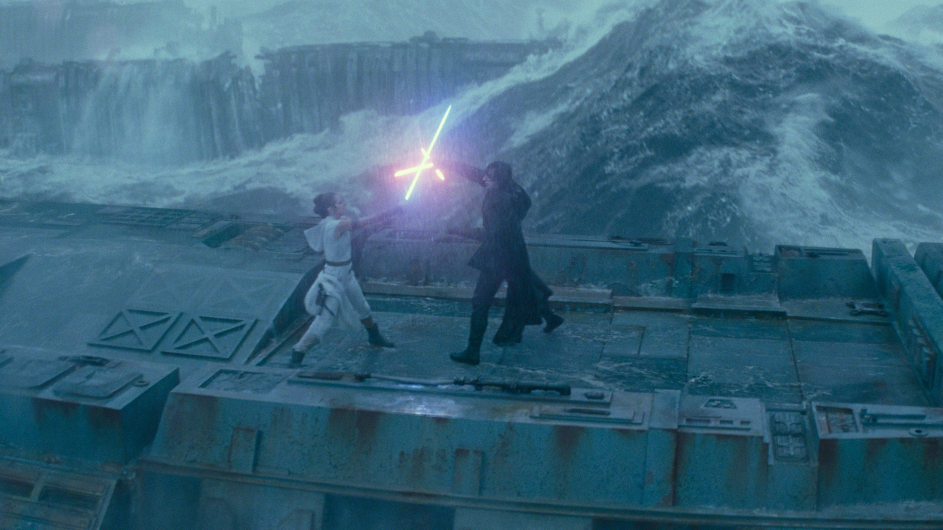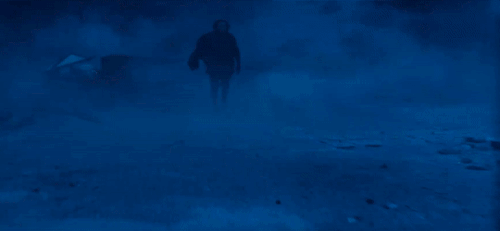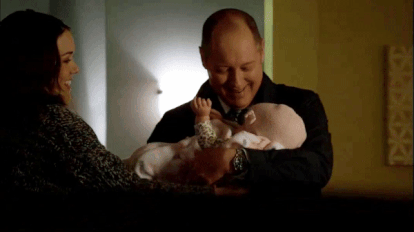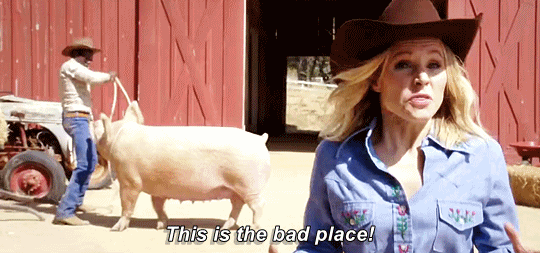Show Time: Should You Watch “The Mandalorian”?

Given that I’m an ENORMOUS fan of Star Wars, it was no surprise that I felt obligated to watch The Mandalorian on Disney+. Initially, I was conflicted about whether I should watch it. Part of me is wary at how Disney is treating this expanded Star Wars Universe — Rogue One hasn’t aged very well in my mind and I never saw Solo (partly because it’s about a character whose backstory I never really needed and partly because I heard mixed things about it). But, then, on the other hand, I figured — since I now have Disney+ — that it would be foolish not to at least watch the first episode or two, just to check it out and see what was up.
A quick synopsis: Five years after the events of Return of the Jedi, a bounty hunter who’s only ever called ‘the Mandalorian’ (played by Pedro Pascal) is trying to make due on what assignments he’s given and the mediocre pay he receives. Thus, when some remnants of the Imperial order offer to pay him very handsomely to track down someone, he takes it without question. However, thanks to this newest assignment, he begins to wonder whether his life is as it should be, or whether he’s lost his integrity and needs to begin again.
So, after watching the first four episodes…
Would I recommend The Mandalorian? In a word: Yes.
(I WILL TRY VERY HARD NOT TO SPOIL THINGS; BUT FYI, THERE COULD BE MILD SPOILERS AHEAD.)
The good:
Where do I even begin? There are so many good aspects of this show that it’s hard to pick a place to start, but I’ll tackle the overall production value first.
I appreciate that this show has a very stout budget but also doesn’t feel like it has to throw a bunch of CGI at you. One of the characters could easily have been CGI, and almost was, but they decided to go with an animatronic/puppet instead, which was a better decision, given how integral this character is to the show. But, when the show does have CGI elements, they’re very well done and convincing. Unlike the prequels, I imagine much of this is shot on location, so the graphic artists and CG animators don’t have to CG an entire world or location as much as a thing in it or an aspect of it (multiple suns or moons — that type of thing). Much like The Force Awakens and The Last Jedi, it knows when to use practical and when to use digital elements, and also knows how to perfectly blend the two. The practical elements don’t feel too restrictive, which was occasionally the case in the original trilogy (ie, that guy in the cantina who’s wearing a werewolf mask), but the CG elements don’t feel over-used.
The show, thus far, has a very minimal cast. We have the Mandalorian and a few recurring characters, but the Mandalorian is the only character played by an actor who’s been in every single episode. Some recurring characters have been in two; and others who I bet will be recurring have only been in one. But, again, we’re not very far into the show. The fact that the core cast is essentially the Mandalorian and another character who doesn’t have any real dialogue keeps it very lean and focused on them. Sure, we’ve had one-off characters who got their little arcs or quests to go on, but that was only in one or two episodes (thus far). I have no idea whether anyone else will be added to the core cast of this show, but I really like how it focuses on Mando and his traveling companion. They are the heart of the show, and their evolving relationship and bond has already been the driving force in at least one character’s arc.
And, on top of that, I cannot get over how amazing Pascal’s performance is as the Mandalorian. Considering that he doesn’t talk much, especially in the first two or three episodes, and his face is constantly covered by his helmet, he has to convey a lot of deep emotion with nothing but his body language. And, I appreciate that the show allows him moments of silence and reflection, rather than him having to verbalize everything. Sure, there are moments where that happens, but it’s moments where it feels appropriate. When he’s alone, he’s allowed to be quiet, rather than talking to himself and spelling everything out for us, the audience.
It also makes me appreciate Pascal as an actor. I’ve only ever seen him in Season 4 of Game of Thrones, where he has a very strong (Spanish?? Latin?) accent, and plays a character who is arguably rooted in some ugly stereotypes. Here, he has an American accent, and because you never seen Mando’s face, I honestly didn’t know it was Pascal playing him until the credits rolled on the first episode.
Speaking of, the credits are weirdly something I both simultaneously hate and love about this show. I, of course, hate it when any given episode is over, but the credits are so well-done that it kinda makes up for it. Ludwig Göransson, who was the composer on Black Panther, is the show’s composer; and I absolutely love his theme music for The Mandalorian, which plays briefly during the episode’s title card, but plays in full during the credits. Plus, the credits feature beautiful artwork (perhaps concept art???) from scenes in that given episode.
Overall, the music for the entire show has been good thus far, but Göransson’s theme for The Mandalorian perfectly captures everything important about the show and the character. Granted, I’ve seen the show already, but just from relistening to the theme, here are some of the vibes I get from the opening minute of it: Solitary. Loner. Wild / wilderness. The hunt. Predator. Prey. Animalistic.
The first part of it also has a bit of a Western vibe to it, which is appropriate as the Mandalorian plays into the lone gunslinger archetype; the second part blends in something that sounds like a march, so it comes off as more militaristic; then it changes into something more akin to a traditional Star Wars theme with loud brass and strings, which invokes the ideas of heroics and adventure; and then it transitions back into this sci-fi punk type of sound.
So, we have elements of a Western-type solitary gun-for-hire, hunting others and/or being hunted himself, out in the harsh and wild elements of the world. His story has some military aspect to it — order, combat, being sent on a mission, etc. And, he’s off on adventure to display some heroics. And this is all while living in a grungy cyber-punk sort of world.
Now, again, I’ve seen the show, so my experience is no doubt informing the imagery that comes to mind when I heard the music. But, again, it’s music that fits the tone and atmosphere of this world, this character and this show to a tee. Based on my experiences with Black Panther and its soundtrack, I think Göransson was the perfect person to score / compose music for this show. Someone like John Williams deals more in the traditional hero/villain themes and tends to stick to more traditional orchestrations (especially when composing Star Wars scores); meanwhile Göransson has proven that he can bring a little bit of the animalistic and exotic across in his compositions, and he doesn’t seem to be afraid to use less traditional instrumentation to try to evoke different things.
After all, this is a side of Star Wars that we haven’t seen in the films, at least not substantially. This is the dark underbelly — the scum, the criminals, the outcasts, the guns-for-hire. It’s grimy, dirty, and worn down. It’s a world where everyone plays by their own rules. There are no righteous heroes; there are no obvious villains; everyone is an anti-hero. At least, initially. Star Wars hasn’t really dealt with anti-heroes before, and even though I’d argue Mando doesn’t seem to be a total anti-hero, he definitely leans more in that direction than someone like Luke Skywalker or Rey does.
I could talk a lot more about other aspects of this show that are well-done, but I’ll conclude on this note which I touched on a bit above: so far, The Mandalorian seems to understand why Star Wars has succeeded — it uses familiar archetypes as a foundation while also telling a new story.
This is why the original trilogy succeeds where the prequels, I would argue, fail. The first Star Wars movie, as has been discussed many times, was based on Joseph Campbell’s outline of the Hero’s Journey. It used familiar characters to tell a somewhat familiar story in a new setting. A seemingly innocuous farmer finds out that he has a special call/destiny, and sets off with his old and wise father-figure. Along the way, he befriends a pirate, “rescues” a princess, and strikes a decisive blow that helps the heroes defeat the villains.
Sometimes, less is more. Having a simple story set in a memorable world with likable characters seems to be better received than … space politics. Don’t get me wrong, I see the merits of the prequels, and I think The Clones Wars TV series goes a long way to help fill in some of the gaps in several characters’ arcs.
We also see a return to form, to some degree, in the new trilogy — particularly The Force Awakens, which makes sense given that it was a soft reboot of A New Hope. Rey is our new space-orphan who finds out she has a special power/call/destiny, etc. BUT, I see Rey also simultaneously filling a different archetype — one, that’s arguably much older — and it has to do with her connection to Kylo Ren. I don’t want to get into it here, because this post is supposed to be about The Mandalorian, but Rey and Kylo Ren feel an awful lot like Persephone and Hades, respectively, in The Force Awakens.
Anyway, the point is that The Mandalorian — both the show and the character — are founded on the archetype of the lone gunslinger. But, that’s really a more recent archetype that I’d argue is actually more of a trope than an archetype. Really, the idea of the lone gunslinger/gunman/cowboy/gun-for-hire probably originates in Japanese samurai stories (as do many elements of the Western genre). Really, the archetype is more accurately described as The Wanderer.
The Wanderer is a man adrift, both physically and spiritually/emotionally. He has no real home and no real destination. He is free but he is also incredibly isolated. He is a man of principle — someone who lives by his own code. He keeps to himself and doesn’t meddle in others’ affairs unless absolutely necessary. He is incredibly dangerous and deadly, being well-trained in hand-to-hand combat and/or wielding a weapon. He has a dark past, and — upon meeting someone who reminds him of the kind of values he used to uphold — eventually starts to reconcile with it by no longer wandering but by staying with his newfound friends and/or family. He eventually finds a purpose.
Kenshin Himura from Rurouni Kenshin (which Rurouni literally means “wanderer” in Japanese) is an excellent example of this. Granted, by the end of the first episode, he’s found a home with a new set of friends / adopted family. But his past still haunts him both physically and emotionally over the course of the show, and part of the series focuses on him reconciling with what he did in his former life as an assassin. And, of course, many cowboys and gunslingers from Westerns fit this archetype as well.
And so does the Mandalorian.
As I said, archetypes are a framework or a jumping off point for well-written Star Wars characters. They are familiar to the audience, which allows you time to establish the world that your character(s) operate in AND THEN you start doing your character-building.
Again, trying not to spoil anything, but we’re already starting to see Mando’s growth as a character. Ideally, your characters can play into the archetypes but, if they’re well-written, shouldn’t be defined by them. At the end of the day, I can think of other ways besides “wanderer” or “lone gunslinger” to describe Mando now that he’s evolving as a character. And, that’s the point.
OK. So I’ve raved about this show so much. Is there anything negative to say about it?
The bad:
There’s maybe one bad thing about the show, and even then, it’s not like a bid deal. It boils down to me thinking that the show leans too heavily on the pre-established Star Wars imagery.
(MILD SPOILERS AHEAD)
So far, we’ve got a Mandalorian bounty hunter; a baby of Yoda’s species; freezing people in carbonite; Jawas; cantinas; Stormtroopers; a bounty-hunting droid; an AT-ST; and probably some other things that I can’t remember right now.
(END OF MILD SPOILERS)
This was especially infuriating in the first two episodes, where it seemed like everything that popped up was something we’ve seen before in the Star Wars universe. It’s a little too much, and it started reminding me of all the “wink-wink” moments in Rogue One.
Granted, it’s also introduced some new things too — creatures, characters, conflicts, planets, etc. And, I think the fourth episode in particular was pretty good about not using anything that was notably Star Wars-y (with one exception).
One other thing I’ll say — which isn’t a criticism with the show itself but more with the culture around it — is that so much of it is getting reduced into memes. Don’t get me wrong: I love the memes that have popped up around the show, and I laugh aloud and/or nod my head in approval at many of them.
BUT, I don’t like the idea of people who aren’t watching the show only absorbing its plot and characters through memes; or people who haven’t seen the newest episode yet (maybe because life got in the way) getting plot points spoiled via memes. This happened to me with the first episode, actually.
Again, I don’t blame the showrunners or anyone who works on The Mandalorian for this meme-centric culture — unless they specifically developed the show with the goal of gaining popularity via memes — but it is just a tad exhausting as a viewer/consumer. So, I can’t imagine how annoying it is for people who don’t want the show or haven’t watched it yet. I mean, we’re only four (almost five) episodes into this show, and already it’s gone viral like nothing else in recent memory (except maybe Game of Thrones???). It’s ridiculous. Part of me enjoys it, and part of me wants it to stop.
So, in answer to the question “Should You Watch The Mandalorian?” I say: FUCK YES!!!
It’s already off to a solid start, and I can’t wait to see what tomorrow’s episode brings!










































































